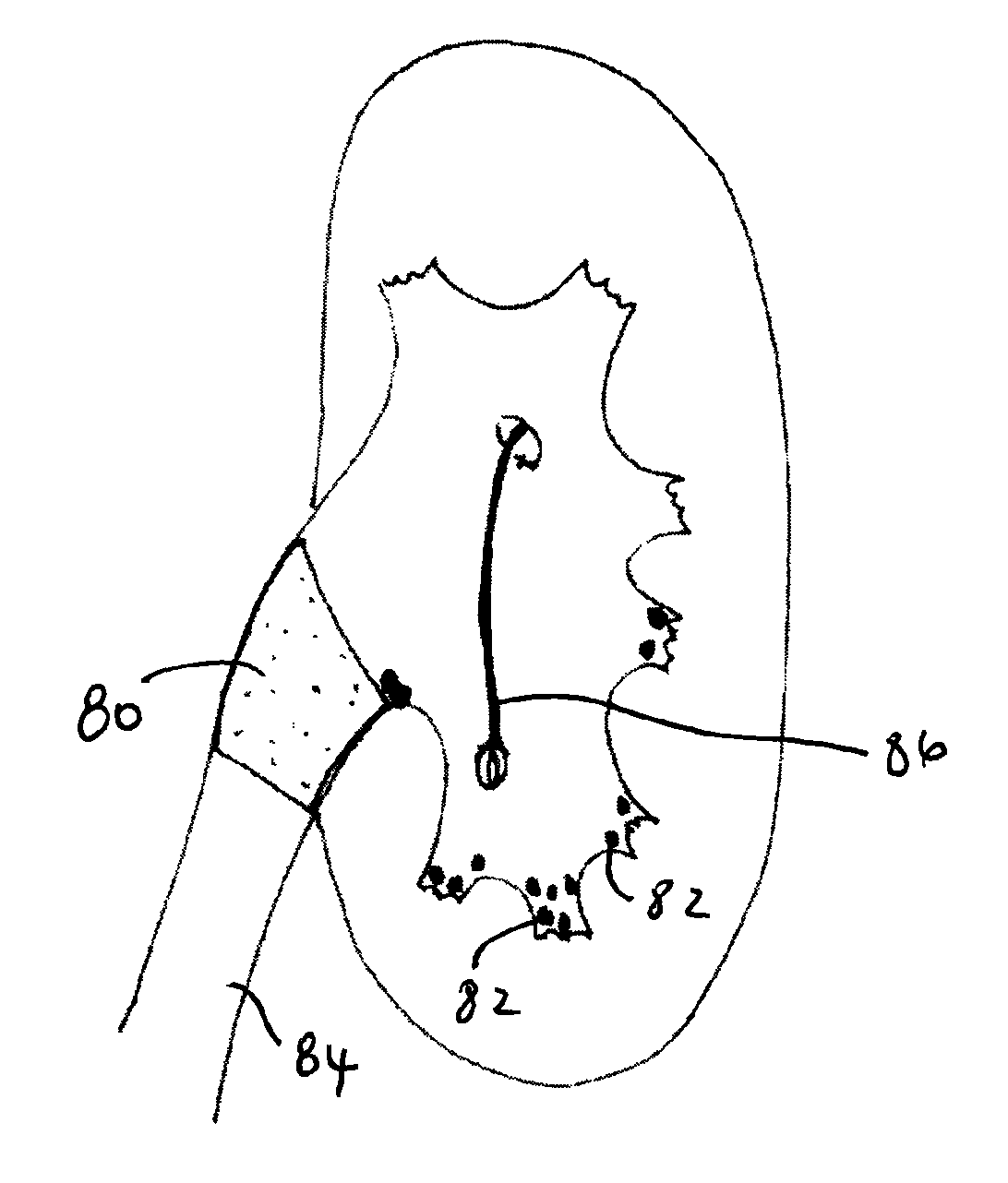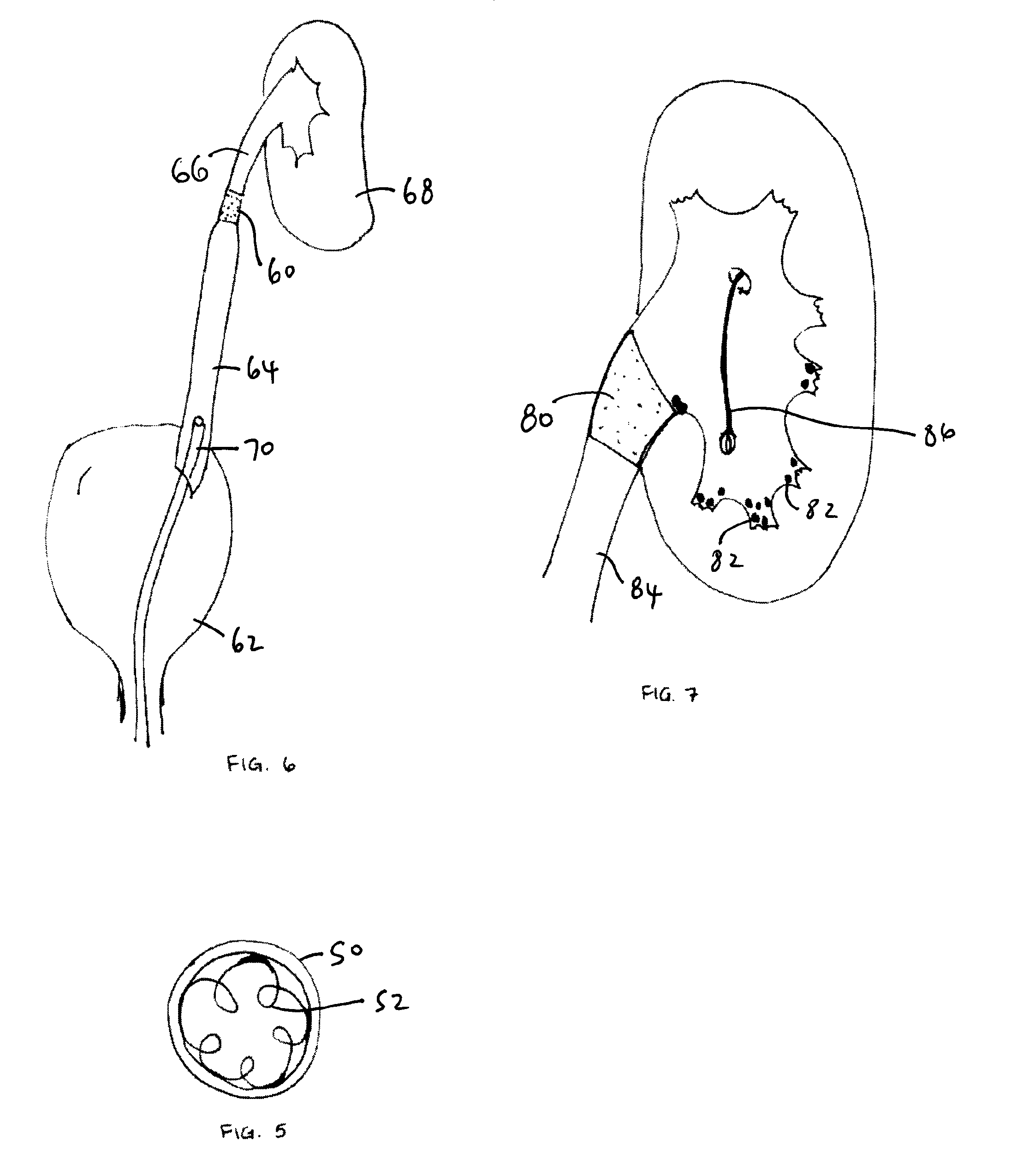Methods and apparatus for temporarily occluding body openings
a technology of occlusion device and body, applied in the field of medical devices, can solve the problems of insufficient obstruction of body passageway, inability to maintain position, and inability to completely occluding the occlusive device, and achieve the effect of improving the adhesion of thermosensitive polymer
- Summary
- Abstract
- Description
- Claims
- Application Information
AI Technical Summary
Benefits of technology
Problems solved by technology
Method used
Image
Examples
Embodiment Construction
[0013]Methods and apparatus are provided for temporarily occluding a body lumen. A method in accordance with one or more embodiments of the invention includes introducing a tip of a catheter into the body lumen, the tip including a central longitudinal axis; expelling a thermosensitive polymer from the tip of the catheter into a portion of the body lumen, with at least a portion of the thermosensitive polymer being expelled from the tip in a direction generally radially outward from the central longitudinal axis to improve adherence of the thermosensitive polymer to a wall defining the body lumen; and at least partially withdrawing the tip from the body lumen and allowing the thermosensitive polymer to harden as it warms to body temperature to form a plug in the body lumen.
[0014]An apparatus for temporarily occluding a body lumen in accordance with one or more embodiments of the invention includes a catheter including a tip at one end thereof, the tip being insertable into the body ...
PUM
 Login to View More
Login to View More Abstract
Description
Claims
Application Information
 Login to View More
Login to View More - R&D
- Intellectual Property
- Life Sciences
- Materials
- Tech Scout
- Unparalleled Data Quality
- Higher Quality Content
- 60% Fewer Hallucinations
Browse by: Latest US Patents, China's latest patents, Technical Efficacy Thesaurus, Application Domain, Technology Topic, Popular Technical Reports.
© 2025 PatSnap. All rights reserved.Legal|Privacy policy|Modern Slavery Act Transparency Statement|Sitemap|About US| Contact US: help@patsnap.com



